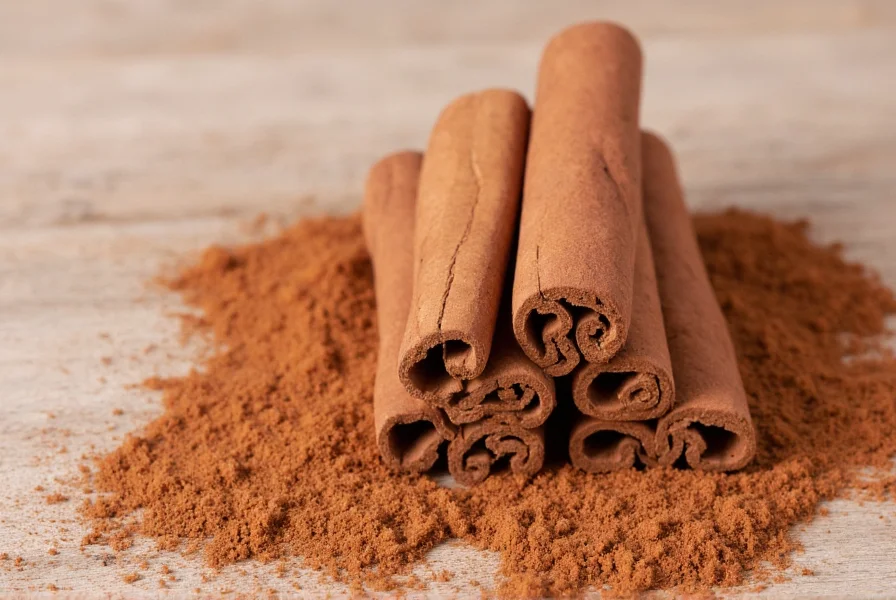"Cinnamon love" has gained significant traction across social media platforms, particularly TikTok and Instagram, where users share purported methods to attract romance using this common spice. The phenomenon blends historical folklore with contemporary wellness trends, creating widespread curiosity about cinnamon's potential romantic properties. While cinnamon offers documented health benefits including anti-inflammatory effects and blood sugar regulation, its connection to romantic attraction lacks substantial scientific validation.
Historical Context of Cinnamon in Love Traditions
Cinnamon's association with love spans multiple ancient cultures. In traditional Chinese medicine, cinnamon was considered a warming herb that could stimulate circulation and vitality—qualities historically linked to romantic energy. Ancient Egyptian love potions sometimes included cinnamon among their ingredients, while medieval European love spells occasionally incorporated the spice for its sweet aroma and warming properties.
These historical uses represent cultural traditions rather than scientifically validated practices. Understanding cinnamon love requires distinguishing between documented historical practices and modern claims that often exaggerate cinnamon's effects. The spice's warm scent and flavor likely contributed to its symbolic association with passion and attraction across various societies.
Evolution of Cinnamon's Romantic Symbolism: A Historical Timeline
Cinnamon's journey from ancient trade commodity to modern relationship symbol follows distinct historical patterns documented by archaeological and textual evidence:
- 2000-1500 BCE: Cinnamon trade routes established between Sri Lanka and Mesopotamia. Its scarcity made it a luxury gift in diplomatic exchanges, establishing symbolic value (source: Encyclopaedia Britannica: Cinnamon History).
- 500 BCE: Inclusion in the Chinese pharmacopeia Shennong Ben Cao Jing as a warming herb for vitality. Later cultural interpretations linked this physiological effect to romantic energy (source: World Health Organization Traditional Medicine Strategy Report, p.24).
- 78 CE: Pliny the Elder documents cinnamon's exorbitant cost (350 denarii per Roman pound) in Natural History, confirming its status as elite ritual material (source: Perseus Digital Library: Pliny, Book 12).
- February 2023: #CinnamonLove surpasses 400 million TikTok views, with NPR documenting its transformation from folk tradition to viral wellness trend (source: NPR: Cinnamon Love Trend Analysis).
Scientific Perspective on Cinnamon and Attraction
From a scientific standpoint, cinnamon contains cinnamaldehyde, which gives it distinctive properties. Research shows cinnamon may improve circulation and has mild mood-enhancing effects due to its aromatic compounds. However, no rigorous scientific studies demonstrate that cinnamon directly influences romantic attraction or relationship success.
A 2022 review published in the Journal of Ethnopharmacology examined historical uses of spices in traditional medicine systems, noting that while cinnamon was frequently included in formulations intended to boost vitality, "the connection between spice consumption and romantic outcomes remains culturally symbolic rather than physiologically direct." This distinction between symbolic tradition and physiological effect is crucial when evaluating cinnamon love claims.
| Claim Type | Scientific Support | Historical Basis |
|---|---|---|
| Cinnamon improves circulation | Strong evidence | Limited historical documentation |
| Cinnamon enhances romantic attraction | No direct evidence | Widespread cultural traditions |
| Cinnamon affects pheromone production | No scientific evidence | Modern social media claim |
Modern Interpretations and Social Media Trends
The "cinnamon love" trend gained viral momentum on TikTok in 2023, with creators sharing "love spells" involving cinnamon consumption or placement. Popular variations include:
- Cinnamon water consumed while visualizing romantic partners
- Cinnamon sprinkled on doorsteps to "attract love"
- Cinnamon-infused candles used during meditation for relationship goals
These modern interpretations often blend elements from different cultural traditions without proper context. While harmless as symbolic practices, they sometimes make exaggerated claims about cinnamon's effects. Understanding cinnamon love in contemporary contexts requires recognizing these as modern wellness rituals rather than evidence-based relationship strategies.
Contextual Boundaries: When Cinnamon Love Practices Apply (and When They Don't)
Practical application of cinnamon love traditions requires awareness of specific limitations documented by health and psychological authorities:
- Cultural Context Limits: Rituals blending Chinese, Egyptian, and European elements risk cultural appropriation. The American Psychological Association emphasizes that adopting traditions without understanding their cultural significance can cause harm (source: APA Cultural Appropriation Guidelines).
- Physiological Constraints: Cassia cinnamon contains coumarin, with EFSA establishing a safe threshold of 0.1mg/kg body weight daily. Exceeding this through ritual consumption may cause hepatotoxicity (source: European Food Safety Authority Scientific Opinion).
- Relationship Dynamics: Rituals cannot compensate for communication deficits. The APA confirms relationship satisfaction depends on mutual respect and conflict resolution skills, not external rituals (source: APA Healthy Relationships Framework).
Safe Practices for Those Interested in Cinnamon Love Traditions
For those interested in exploring cinnamon love traditions safely:
- Use culinary-grade cinnamon in food preparation rather than consuming it straight, which can irritate mucous membranes
- Consider cinnamon's documented health benefits when incorporating it into your diet
- View ritualistic uses as symbolic practices rather than guaranteed relationship solutions
- Be aware that cassia cinnamon (the most common variety) contains coumarin, which can be harmful in large quantities
- Consult with healthcare providers before making significant dietary changes
Practical Applications Beyond Folklore
While cinnamon love rituals may lack scientific backing, cinnamon offers genuine benefits worth incorporating into daily life. Its natural sweetness can reduce sugar consumption in recipes, and its anti-inflammatory properties support overall wellness. Creating shared cooking experiences with cinnamon-rich recipes can foster connection—though this stems from the shared activity rather than any mystical properties of the spice.
For those exploring cinnamon love traditions, focusing on cinnamon's ability to enhance sensory experiences—its warm aroma and flavor—provides a more grounded approach. Preparing a cinnamon-infused meal together creates a shared sensory experience that naturally fosters connection, demonstrating how the spice can support relationship building through practical, enjoyable activities rather than mystical claims.
Conclusion: Balancing Tradition and Reality
Cinnamon love represents an interesting intersection of historical tradition, cultural symbolism, and modern social media trends. While the spice offers genuine health benefits and sensory appeal, claims about its direct effects on romantic attraction should be understood as cultural folklore rather than scientific fact. Those interested in cinnamon love traditions can enjoy them as symbolic practices while maintaining realistic expectations about their effects on relationships.











 浙公网安备
33010002000092号
浙公网安备
33010002000092号 浙B2-20120091-4
浙B2-20120091-4